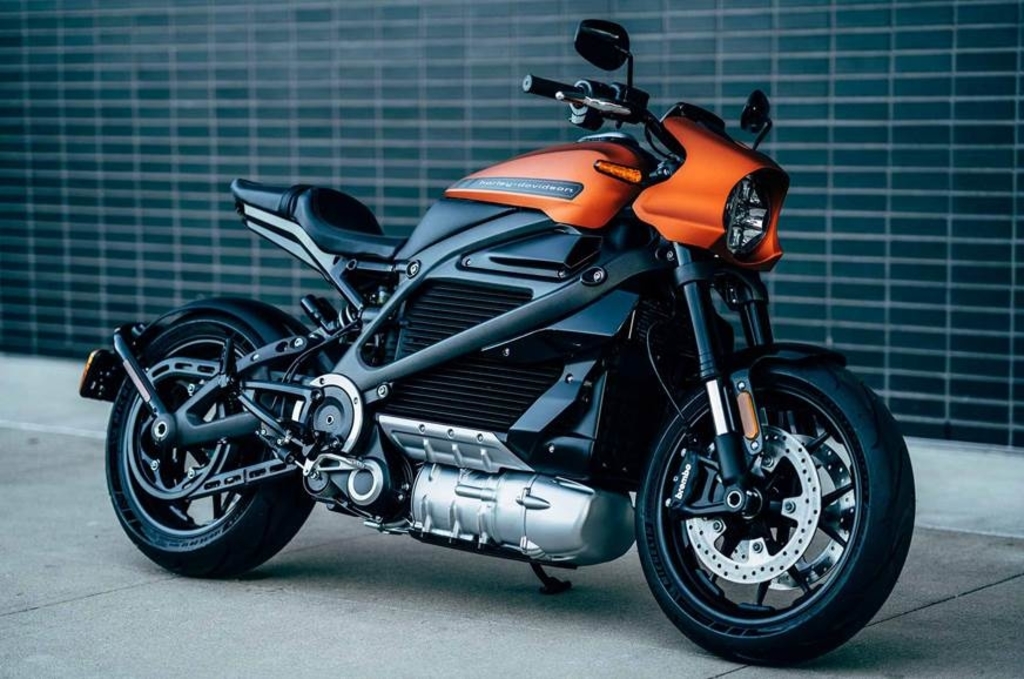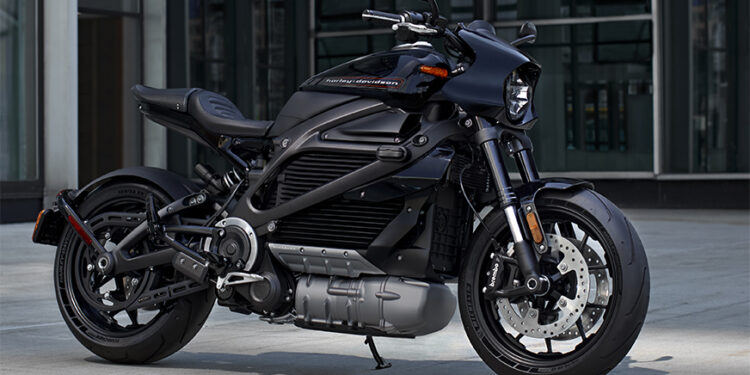The Harley-Davidson LiveWire is a battery-electric motorcycle which was developed by Harley-Davidson in collaboration with Johnson Controls. It was unveiled to the public for the first time at the 2018 North American International Auto Show on Tuesday, media day. The motorcycles have been designed with an emphasis on safety and functionality, as H-D notes that ‘until now, electric motorcycling hasn’t been a very practical proposition due to limited range, limited charging infrastructure and high purchase costs’.
With fall in of prices of lithium ion batteries, production of electric motorcycles has become more affordable – this directly helped H-D in developing a new eRide model. A number of other motorcycle manufacturers are also working on their own lines of electrified bikes. According to an official release, ‘an increasing number of these global brands see the future in electrification and are making significant investments into their EV platforms alongside continued research and development to improve EV performance and reduce costs over the longer term’.

What is Harley-Davidson LiveWire?
The Harley-Davidson LiveWire is a battery-electric motorcycle which was developed by Harley-Davidson in collaboration with Johnson Controls. It was unveiled to the public for the first time at the 2018 North American International Auto Show on Tuesday, media day. The motorcycles have been designed with an emphasis on safety and functionality, as H-D notes that ‘until now, electric motorcycling hasn’t been a very practical proposition due to limited range, limited charging infrastructure and high purchase costs’.
With fall in of prices of lithium ion batteries, production of electric motorcycles has become more affordable – this directly helped H-D in developing a new eRide model. A number of other motorcycle manufacturers are also working on their own lines of electrified bikes. According to an official release, ‘an increasing number of these global brands see the future in electrification and are making significant investments into their EV platforms alongside continued research and development to improve EV performance and reduce costs over the longer term’.
Specifications of Harley-Davidson Live Wire
The bike comes with a lithium-ion battery pack with a nominal capacity of 13.9 kWh, which helps the bike to achieve a range of 40 miles (65 KM). The lithium-ion battery pack is housed under the seat and can be charged with a 500W charging unit, which is provided along with the bike.
The Harley-Davidson Live Wire is a sub-500 cc, liquid-cooled, four-stroke engine which is claimed to produce a maximum power of 143bhp and a peak torque of 148Nm, enabling the bike to achieve a top speed of 93mph (140 kph) and a 0-62mph (0-100kph) time of 4.9 seconds. The bike also features a digital engine management system along with an advanced traction control system, which provides a set-and-forget riding experience.
How does the Harley-Davidson Live Wire works?
The Harley-Davidson Live Wire uses a lithium ion battery, which is charged through a charging unit, while the battery is depleted, the bike relies on the engine to power the wheels with a help of a belt. The engine and the wheels have a computer system which helps the bike to achieve top speed, while the rider is only required to pedal the bike until the battery is charged to full.
The Harley-Davidson Live Wire comes with a new e-mapping system that allows it to detect the available charging stations and calculates the fastest route to reach the destination. According to Harley-Davidson, the rider can also use the Harley-Davidson Connect app to plan their journey and the app shows the available charging stations along with expected charge level. The rider can even set up charging rules, i.e., only when the battery level is below a certain percentage.
Key features of Harley-Davidton Live Wire
- A range of 40 miles on a single charge. – The bike can be charged with a 500W charging unit.
- A new e-mapping system that allows it to detect the available charging stations and calculates the fastest route to reach the destination.
- Harley-Davidson Connect app, which shows the available charging stations along with expected charge level.
- The rider can set charging rules, i.e., only when the battery level is below a certain percentage.
- An engine management system and traction control system.
Pros of Harley Davidson Live wire
- Booted-up acceleration – In just 4.9 seconds, the bike can achieve a top speed of 93mph (140 kph). This makes the Harley-Davidson Live Wire the fastest electric motorcycle in the world.
- Low maintenance costs – The Harley-Davidson Live Wire relies on an internal combustion engine, which makes it a petrol bike with a petrol tank, and once a full charge is achieved, it is completely emission-free.
- Electronic mapping system – The bike comes with a new e-mapping system that allows it to detect the available charging stations and calculates the fastest route to reach the destination.
- Ride-assist features – The bike has head-thrown turn signals, cornering lights, and a rear-view camera for added safety.
Cons of Harley Davidson Live wire
- Expensive – The Harley-Davidson Live Wire is the most expensive electric motorcycle in the world.
- Low range – The range on a single charge is 40 miles (65 KM). This makes the Harley-Davidson Live Wire the second slowest electric motorcycle in the world, with the lowest range.
- Low power – The bike produces a maximum power of 143bhp and a peak torque of 148Nm. This makes the Harley-Davidson Live Wire the least powerful electric motorcycle in the world.
- The bike is only available in a single model.
Conclusion
The Harley-Davidson LiveWire is a battery-electric motorcycle which was developed by Harley-Davidson in collaboration with Johnson Controls. It was unveiled to the public for the first time at the 2018 North American International Auto Show on Tuesday, media day. The motorcycles have been designed with an emphasis on safety and functionality, as H-D notes that ‘until now, electric motorcycling hasn’t been a very practical proposition due to limited range, limited charging infrastructure and high purchase costs’.
With fall in of prices of lithium ion batteries, production of electric motorcycles has become more affordable – this directly helped H-D in developing a new eRide model. A number of other motorcycle manufacturers are also working on their own lines of electrified bikes. According to an official release, ‘an increasing number of these global brands see the future in electrification and are making significant investments into their EV platforms alongside continued research and development to improve EV performance and reduce costs over the longer term’.











